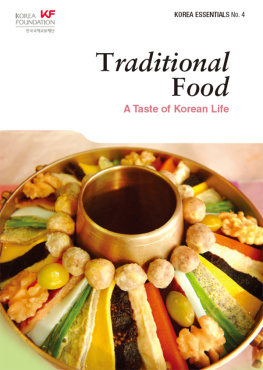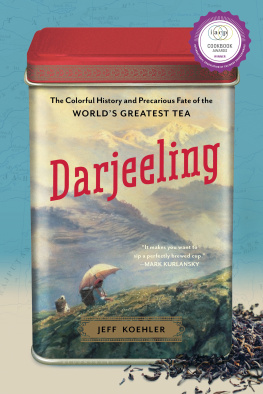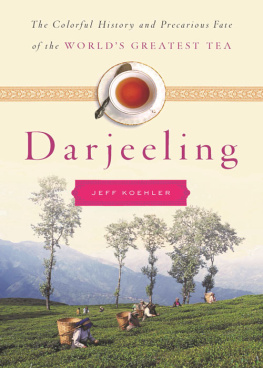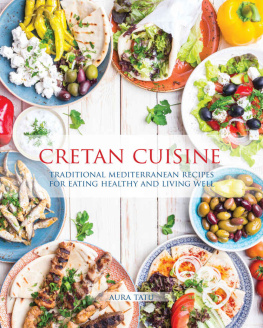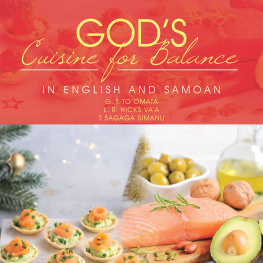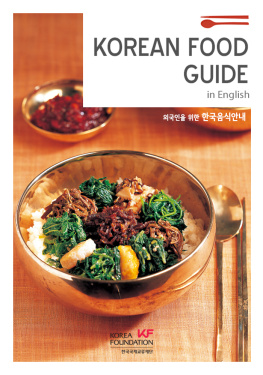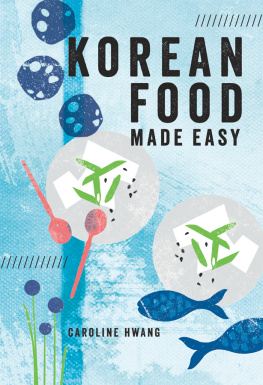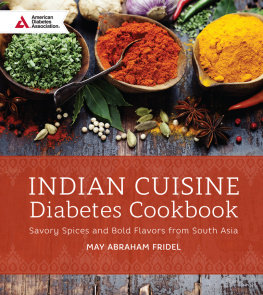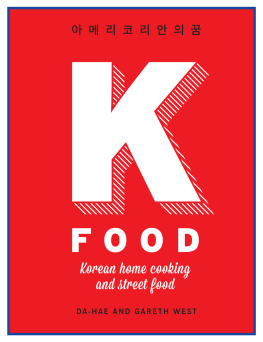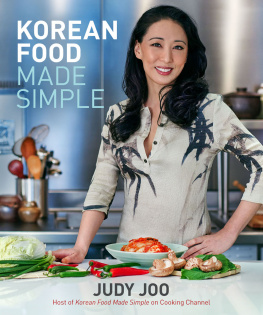OTHER INFORMATION
MORE ABOUT KOREAN FOOD
BOOKS
With Korean cuisine enjoying increasing popularity overseas, you can find a number of books on Korean food and cooking, including cookbooks for those whod like to explore the world of Korean food in the comfort of their own kitchen.
Chang, Sun-Young. A Korean Mother's Cooking Notes. Seoul: Ewha Womans University Press, 1997.
Chung, Haekyung. Korean Cuisine: A Cultural Journey. Seoul: Thinking Tree, 2009.
Dong-A Ilbo. Korean Food, The Originality + Korean Food, The Impression. Seoul: Dong-A Ilbo Publication, 2010.
Hepinstall, Hisoo Shin. Growing Up in a Korean Kitchen: A Cookbook. Berkeley, California: Ten Speed Press, 2001.
Institute of Traditional Korean Food. The Beauty of Korean Food: With 100 Best-Loved Recipes. Seoul: Hollym, 2008.
Lee, Cecilia Hae-Jin. Eating Korean: From Barbecue to Kimchi, Recipes fromMy Home. Hoboken, New Jersey: Wiley, 2005.
Lee, Cecilia Hae-Jin. Quick and Easy Korean Cooking. San Francisco: Chronicle Books, 2009.
Kim, Yun-sik. Temple Food to Eat with Your Eyes. Seoul: Seoul Selection. 2009.
Kwak, Jenny and Fried, Liz. Dok Suni: Recipes from My Mother's Korean Kitchen. New York: St. Martin's Press, 1998.
Samuels, Debra and Chung, Taekyung. The Korean Table: From Barbecue to Bibimbap100 Easy-to-Prepare Recipes. Singapore: Tuttle Publishing, 2008.
ONLINE RESOURCES
Koreataste www.koreataste.org
Run by the Korea Tourism Organization, this attractive website features restaurant reviews, introductions to Korean dishes, and even interviews with noted experts.
ZenKimchi Korean Food Journal www.zenkimchi.com
Lots of restaurant reviews, recipes, and commentary, as well as a guide to Korean food.
Seoul Eats www.seouleats.com
Run by Daniel Gray, a food loving Delawarean who came to Korea, the blog focuses on restaurant reviews, but Dan runs a variety of food tour and cooking classes, too.
Maangchi www.maangchi.com
This blog, created by Korean-born and -raised Emily Kim, features videos of her making Korean food.
TriFood www.trifood.com
TriFood is committed to providing information about Korea and its delicious and healthy food. And indeed, there are tons of recipes, pictures of dishes, and even a glossary of Korean food.
RECOMMENDED RESTAURANTS
The best way to learn about and experience Korean cuisine is to eat it, of course! Here are some Seoul restaurant selections that will help get you started.
HANJEONGSIK/PALACE CUISINE
Hanjeongsik is a full-course Korean meal featuring rice, soup and a table full of sidedishes. If youd like to experience Korean traditional cuisine at its most sublime, try Korean royal palace cuisine and eat like a king.
Yongsusan
Goryeo-style royal cuisine served in a beautiful setting. Highly recommended. Located just to the west of Changdeokgung Palace (shop in Samcheong-dong, too).
Hours noon to 3 pm / 6 to 10 pm Prices 48,000 to 160,000 won Getting There Exit 3, Anguk Station, Line 3. Walk toward Changdeokgung Palace and swing a left. Keep walking untill you see Yongsusan on your left. Tel (02) 743-5999
Doore
This old eatery in the atmospheric Insa-dong district does a variety of jeongsik courses, including one with steamed ribs served in a small green pumpkin.
Hours noon to 3 pm / 6 to 10 pm Prices 25,000 to 65,000 won Getting there From Exit 5 of Jongno 3-ga Station (Line 5), walk toward Insa-dong's main road. At the Insa-dong Intersection, turn right (towards Nagwan Arcade) and enter the first alley on your left. Enter another alley on your right and you should see the restaurant. Tel (02) 732-2919
Seokparang
Housed in a Joseon-era villa, this lovely eatery specializes in Joseon royal cuisine served on antique ceramics. Located in Buam-dong.
Hours noon to 3 pm / 6 to 10 pm Prices Around 95,000 to 155,000 won Getting There Exit 3, Gyeongbokgung Station, Line 3. Take bus 0212, 1020, 1711, 7018, or 7022 to Sangmyung University. The restaurant is a Korean-style building near there. Tel (02) 395-2500
Dalhangari
Organic Korean home-style hanjeongsik that is tasty and good for you. Located in scenic Samcheong-dong.
Hours 11:30 am to 10 pm Prices 20,000 to 70,000 won Getting There Exit 1, Anguk Station, Line 3. Walk along Samcheong-dong Road until you get to the Prime Ministers residence. Dalhangari is in front of it. Tel (02) 733-7902
KOREAN MEAT DISHES
Popular Korean meat dishes include galbi (ribs, either beef or pork), bulgogi (marinated beef grilled atop an open flame), and samgyeopsal (Korean-style bacon). All are popular with foreign diners. The meat is typically eaten wrapped in a lettuce leaf with condiments. NOTE: In Korea, beef is usually more expensive than pork.
Bamboo House
Housed in a stunning Frank Gehry-esque building in the tony Yeoksam-dong neighborhood, this pricey establishment does some of the best Korean barbecue and grill in the country in a multilingual setting.
Hours 11:30 am to 2:30 pm / 5:30 to 10:30 pm Prices 40,000 won and up Getting There Exit 7, Yeoksam Station, Line 2. Walk 10 minutes in the direction of Gyeonbok Apartments (or take a cabif youre eating here, money is clearly not an issue). Tel (02) 555-6390
Cheolgil Wang Galbisal
Wonderful beef galbi, served with outstanding bean paste stew. Very popular with the college crowd near Hongik University.
Hours 24 hours Prices Around 25,000 won Getting There Exit 5, Hongik University Station, Line 2. Walk 20 minutes in the direction of the Sanollim Theaterthe restaurant is in the alley across from it. Tel (02) 332-9543
Maple Tree House
Samgyeopsal with a beautiful wooded garden in Samcheong-dong.
Hours 11:30 am to 10 pm Prices Around 30,000 won Getting There Exit 1, Anguk Station, Line 3. Walk about 20 minutes along Samcheong-dong Roadthe restaurant is near Korea Banking Institute. Tel (02) 730-7461
BIBIMBAP
This simple dish of rice mixed with seasoned vegetables and red chili pepper sauce is fast becoming an overseas favorite. Even Gwyneth Paltrow likes it. It is served in either a metal/plastic bowl or a stone pot (dolsot bibimbap).
Gogung
The southwestern city of Jeonju does the best bibimbap in Korea. If you cant get there, though, Gogung in Insa-dong does a pretty good Jeonju bibimbap.
Hours 11 am to 9 pm Prices Around 10,000 won Getting There Exit 6, Anguk Station, Line 3. Located in the basement of Ssamziegil in Insa-dong. Tel (02) 736-3211
Bon Bibimbap
The flagship store of this chain does an assortment of bibimbap at reasonable prices.
Hours 9:30 am to 10 pm Prices Under 10,000 won Getting There Exit 3, Jonggak Station, Line 1. Walk toward Tapgol Park. Turn left just before the park. Gogung is right there, across from the park, near the entrance to Insa-dong. Tel (02) 736-4288
SOUPS AND STEWS
Korea does many tasty soups and stews, including doenjang jjigae (soybean paste stew), kimchi jjigae (kimchi stew), sundubu jjigae (tofu stew), seolleongtang (milky beef soup), and samgyetang (chicken ginseng soup).
Tobang
This place does standard Korean fare like kimchi jjigae, sundubu jjigae

